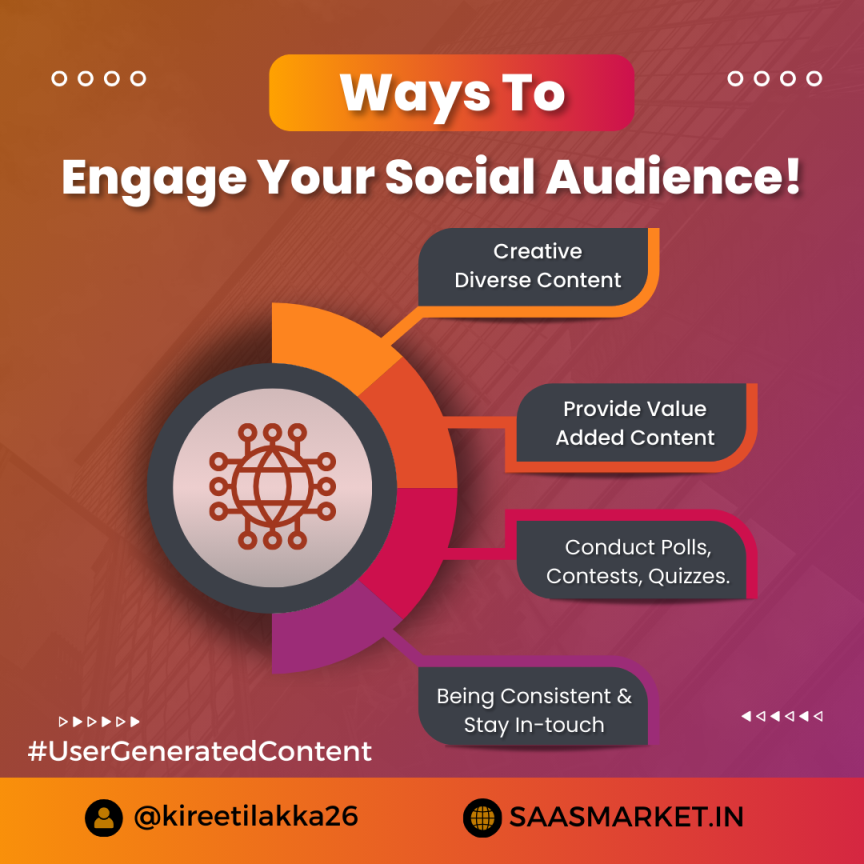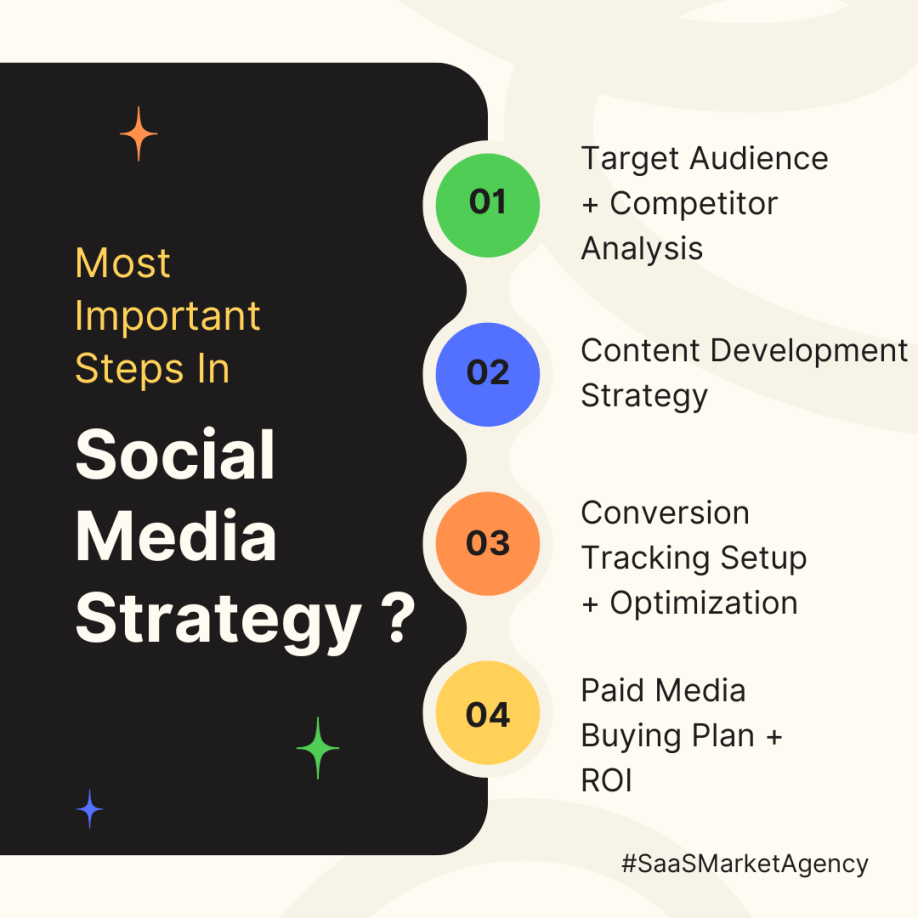Let’s learn more about Focused Keyphrase: Social Media Marketing Strategy.
Introduction:
In the digital age, social media has become an integral part of any marketing strategy. However, simply being present on social media platforms is not enough. Businesses need to ensure that their social media marketing efforts are generating tangible results.
This blog post will explore key factors to consider to evaluate the effectiveness of your social media marketing strategy.
11 Steps and Effectiveness Of Social Media Marketing Strategy
Defining Objectives
- Clearly outline your goals and objectives for social media marketing.
- Examples include increasing brand awareness, driving website traffic, generating leads, and boosting sales.
- Social Media Marketing objectives ? How to set it up ?
- Setting up effective social media marketing objectives involves defining clear and measurable goals aligned with overall business objectives.
- Identify specific outcomes such as increasing brand awareness, driving website traffic, generating leads, or boosting sales.
- Ensure objectives are realistic, relevant, and time-bound, allowing for effective tracking and evaluation of success.
Audience Analysis
- Understand your target audience: their demographics, interests, and preferences.
- Tailor your content to resonate with your audience and encourage engagement.
- Defining Target Audience:
- Defining a target audience involves understanding demographics, psychographics, and behaviors of potential customers.
- Analyze factors like age, gender, location, interests, and purchasing habits.
- Utilize Market Research Process, surveys and data analytics to create detailed buyer personas. This represents ideal customers, helping tailor Marketing-Branding Strategies to their needs and preferences.
Content Strategy
- Develop a diverse content strategy that includes informative, entertaining, and promotional content.
- Utilize multimedia such as videos, images, and infographics to capture audience attention.
- Content Development Strategy
- Creating a robust content development strategy begins with defining goals, identifying target audience needs, and researching relevant topics. Plan content types, formats, and channels, ensuring consistency and alignment with brand voice.
- Incorporate SEO Best Practices and utilize analytics for continuous improvement, aiming to engage and provide value to the audience.
Engagement Metrics - KPIs
- Monitor key engagement metrics such as: likes, comments, shares, and clicks.
- Analyze engagement patterns to identify successful content and areas for improvement.
- Ways for Social Media Engagement
- Boost social media engagement by posting diverse content, including images, videos, polls, and interactive stories.
- Encourage audience interaction through contests, quizzes, and user-generated content.
- Respond promptly to comments and messages to foster two-way communication.
- Collaborate with influencers and leverage trending hashtags to expand reach and visibility.
Reach & Impressions
- Track the reach and impressions of your social media posts to gauge their visibility.
- Experiment with different post timings and frequency to optimize reach.
- KPIs of Social Media Campaigning.
- Key Performance Indicators (KPIs) for social media campaigns vary based on objectives but commonly include engagement metrics like likes, shares & comments to gauge audience interaction.
- Reach and impressions measure campaign visibility, while click-through rate (CTR) indicates effectiveness in driving traffic.
- Conversion metrics such as lead generation and sales revenue quantify campaign ROI.
- Additionally, sentiment analysis helps evaluate brand perception. Analyzing these KPIs provides insights into campaign performance, allowing marketers to refine strategies for better results.

Conversion Tracking
- Implement conversion tracking tools to measure the effectiveness of your social media campaigns.
- Track conversions such as form submissions, purchases, and sign-ups attributed to social media channels.
- Conversion Tracking Setup Steps.
- Setting up conversion tracking involves defining conversion actions, such as form submissions or purchases, in your analytics platform.
- Generate tracking codes for each action and implement them on relevant pages using Google Tag Manager or directly into the website code.
- Test and verify tracking functionality to ensure accurate data collection.
Social Media Paid Campaigning with Media Buying Plan
Crafting a successful social media paid campaign begins with a thorough media buying plan.
Identify campaign objectives, target audience, and budget allocation. Choose suitable platforms based on audience demographics and campaign goals.
Develop compelling ad creatives and messaging tailored to each platform. Implement tracking mechanisms to measure campaign performance and optimize accordingly.
Regularly analyze key metrics to refine targeting and messaging for maximum ROI.
Return On Investment (ROI)
- Calculate the ROI of your social media marketing efforts by comparing the costs incurred with the revenue generated.
- Consider both direct and indirect revenue attributed to social media activities.
- Accurate way of Calculating Return On Investment through SMM
- Return on Investment (ROI) measures the profitability of an investment relative to its cost.
- To accurately calculate ROI, divide the net profit generated by the investment by the initial cost and express the result as a percentage.
- It’s crucial to consider all costs and revenue associated with the investment over a specific period.
- Additionally, tracking key performance indicators (KPIs) relevant to the investment, such as conversion rate, customer acquisition cost & lifetime value, provides insights into ROI performance and helps optimizing future investments.
Customer Feedback
- Monitor social media channels for customer feedback, reviews, and sentiments.
- Address customer inquiries and concerns promptly to maintain a positive brand reputation.
- Customer Feedback Integration.
- Customer Feedback Integration involves systematically gathering, analyzing, and acting upon feedback from customers to improve products, services, and overall customer experience.
- It encompasses various channels like surveys, reviews, and social media interactions.
- By integrating customer feedback into decision-making processes, businesses can identify areas for improvement, enhance customer satisfaction, and foster loyalty.
- Utilizing feedback management systems and implementing continuous feedback loops ensures improvement. Where customer insights can effectively leverage to drive meaningful engagements and maintain a customer-centric approach across all touch-points.
Competitor Analysis
- Evaluate the social media presence and performance of competitors in your industry.
- Identify opportunities for differentiation and improvement based on competitor insights.
- Competitor Analysis in Social Media
- Competitor Analysis in Social Media involves evaluating competitors’ social media presence, content strategies, and engagement tactics to gain insights and refine your own approach.
- Tactics include monitoring competitors’ posts, analyzing their content performance, identifying audience demographics, and studying engagement metrics.
- Additionally, examining competitors’ paid advertising strategies, influencer partnerships, and response to customer feedback provides valuable insights for optimizing your own social media campaigns.
- Regularly benchmarking against competitors helps refine your strategy, stay ahead of trends & identify opportunities for differentiation in the competitive landscape.
Continuous Optimization - Social Media Optimization
- Regularly review and analyze social media performance data.
- Use insights gained to refine your strategy, experiment with new approaches, and stay ahead of evolving trends.
- Social Media Optimization (SMO) – Process Steps
enhances your social media presence and engagement. Process steps include:
- Profile Optimization: Ensure completeness and consistency across platforms.
- Content Strategy: Develop relevant, engaging content aligned with audience interests.
- Audience Engagement: Interact with followers, respond promptly, and foster community.
- Hashtag Usage: Research and incorporate relevant hashtags to expand reach.
- Analytics Monitoring: Track performance metrics, analyze data, and adjust strategy accordingly.
- Platform-specific Tactics: Utilize features like stories, polls, and live streams to diversify content and engage users. Implementing these steps enhances visibility, fosters engagement, and drives results across social media platforms.
Conclusion
Evaluating the effectiveness of your social media marketing strategy is crucial for driving meaningful results and maximizing return on investment.
By defining clear objectives, analyzing audience behavior, and leveraging data-driven insights, businesses can optimize their social media efforts to achieve tangible outcomes and drive business growth.
Contact SaaS Market LLP Team for Support:
